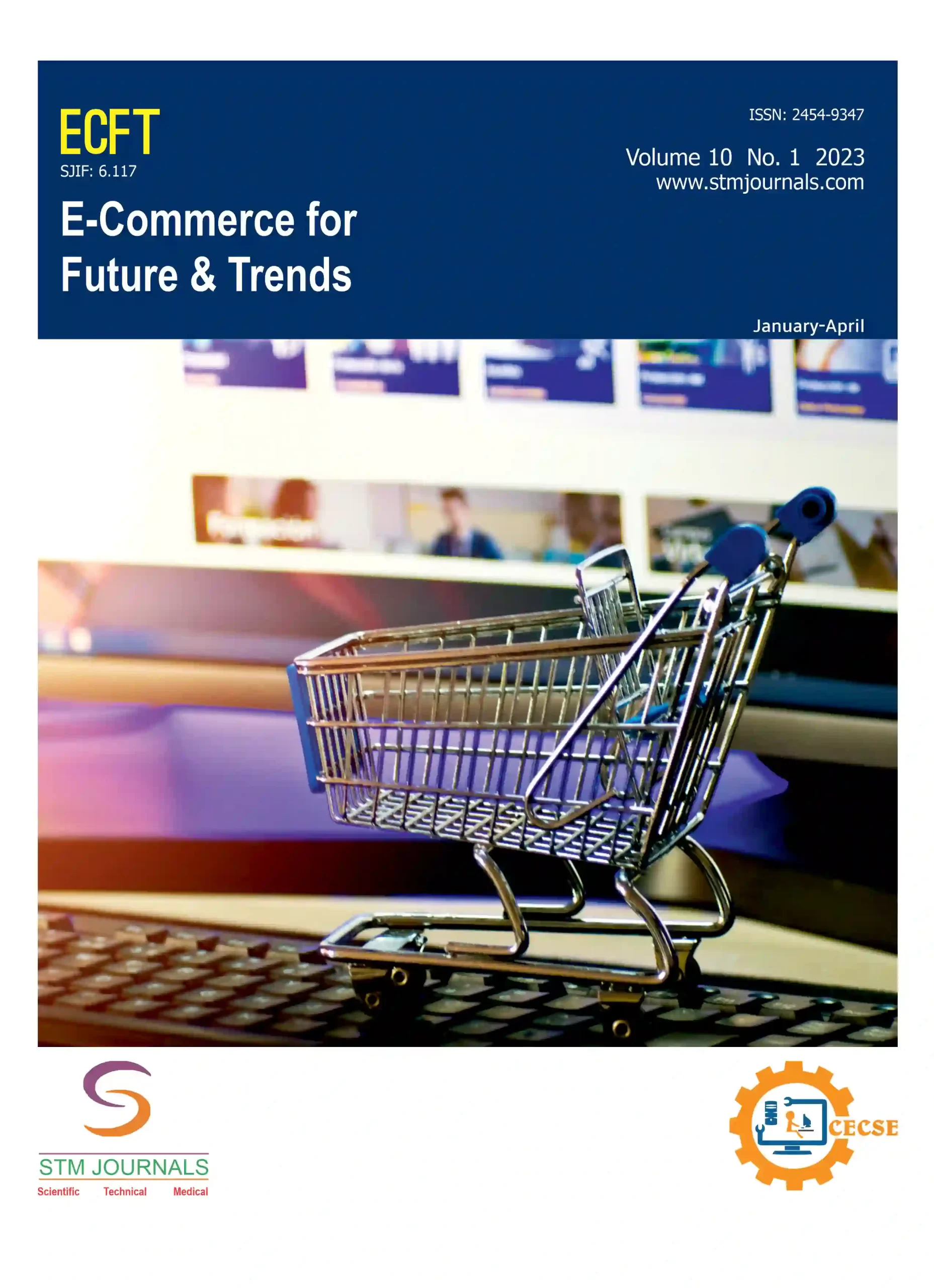
V. Basil hans,
- Research Professor, Department of Management & Commerce, Srinivas University, Mangaluru, Karnataka, India
Abstract
In the past ten years, India has witnessed extraordinary growth in e-commerce, which can be attributed to the proliferation of smartphones, the growing middle class, and the increasing number of people who have access to the internet. The retail scene has been revolutionized by major firms such as Amazon and Flipkart, as well as growing local platforms, which offer a diverse range of items and services. A further acceleration of the use of contactless deliveries, digital payments, and online shopping was brought about by the COVID-19 epidemic. There are several key trends that are influencing the Indian e-commerce business. These trends include the growth of mobile commerce, the increasing need for content in regional languages, the incorporation of artificial intelligence and machine learning for the purpose of providing tailored experiences, and the expansion of social commerce. A second factor that has contributed to the expansion of the sector is the government’s push for digitalization, which includes laws such as Digital India and efforts that promote cashless transactions. The potential for quick and sustainable levels of growth in small manufacturing and commercial sectors can be realized through the use of e-commerce, which has the potential to deliver particularly big microeconomic and macroeconomic advantages in India. In comparison to more conventional kinds of business, electronic commerce offers a number of distinct advantages. Because of its leverage, flexibility, and speed, e-commerce offers the possibility of a new relationship between sellers and buyers in the supply chain of marketing and service to customers. This new relationship might be beneficial to both parties. Future projections indicate that India’s e-commerce market will become one of the largest in the world. This is expected to occur as a result of advancements in logistics and supply chain efficiency, as well as the use of future technologies such as blockchain and helicopter delivery. A number of factors are anticipated to have an impact on the future landscape, including the emergence of Tier 2 and Tier 3 cities as new growth hubs and the growing interest in environmentally friendly and locally produced goods. On the other hand, the industry is confronted with a number of issues, including regulatory obstacles, competition from firms from around the world, and the requirement for more robust data security. In order to maintain the pace and ensure that growth is distributed evenly across the nation, it will be essential to overcome these obstacles. Within the context of this quickly growing digital environment, this study investigates these developing trends and the future outlook of e-commerce in India. It highlights both opportunities and difficulties that are present in this ecosystem.
Keywords: Social Commerce, Artificial Intelligence (AI), Supply Chain, Digital Payments, Blockchain, Logistics, Sustainable Shopping, Online Retail
[This article belongs to E-Commerce for Future & Trends (ecft)]
V. Basil hans. The Futuristic Outlook of E-Commerce in India. E-Commerce for Future & Trends. 2024; 11(03):-.
V. Basil hans. The Futuristic Outlook of E-Commerce in India. E-Commerce for Future & Trends. 2024; 11(03):-. Available from: https://journals.stmjournals.com/ecft/article=2024/view=177250
References
[1] Hashemi-Pour C, Lutkevich B. e-commerce . CIO. TechTarget; 2023 . Available from: https://www.techtarget.com/searchcio/definition/e-commerce
[2] India’s E-commerce Boom: Growth, Trends & Future Prospects | IBEF . India Brand Equity Foundation. 2023. Available from: https://www.ibef.org/industry/ecommerce
[3] Chatterjee S. E-Commerce in India: A review on culture and challenges. In2015 international conference on soft computing techniques and implementations (ICSCTI) 2015 Oct 8 (pp. 105-109). IEEE.
[4] Kalia P, Kaur N, Singh T. E-Commerce in India: evolution and revolution of online retail. InMobile commerce: Concepts, methodologies, tools, and applications 2018 (pp. 736-758). IGI Global.
[5] Nougarahiya S, Shetty G, Mandloi D. A review of e–commerce in india: The past, present, and the future. Research Review International Journal of Multidisciplinary. 2021 Mar 15;6(03):12-22.
[6] Dewangi Sharma. Invest India . Investindia.gov.in. 2019 . Available from: https://www.investindia.gov.in/team-india-blogs/e-commerce-boom-india-current-trends-and-prospects
[7] Amit R, Zott C. Value drivers of e‐commerce business models. Creating value: Winners in the new business environment. 2017 Aug 25:13-43.
[8] Singh, Raj Kumar, E-Commerce in India: Opportunities and Challenges (January 6, 2019). Proceedings of 10th International Conference on Digital Strategies for Organizational Success, Available at SSRN: https://ssrn.com/abstract=3315048 or http://dx.doi.org/10.2139/ssrn.3315048
[9] Reddy NA, Divekar BR. A study of challenges faced by e-commerce companies in India and methods employed to overcome them. Procedia Economics and Finance. 2014 Jan 1;11:553-60.
[10] Tarafdar M, Vaidya SD. Challenges in the adoption of E-Commerce technologies in India: The role of organizational factors. International Journal of Information Management. 2006 Dec 1;26(6):428-41.

E-Commerce for Future & Trends
| Volume | 11 |
| Issue | 03 |
| Received | 26/09/2024 |
| Accepted | 01/10/2024 |
| Published | 07/10/2024 |

